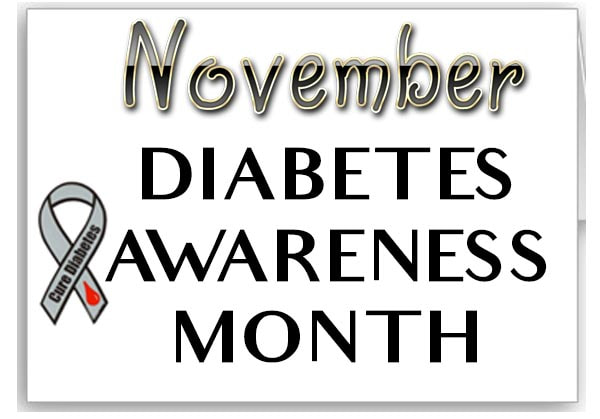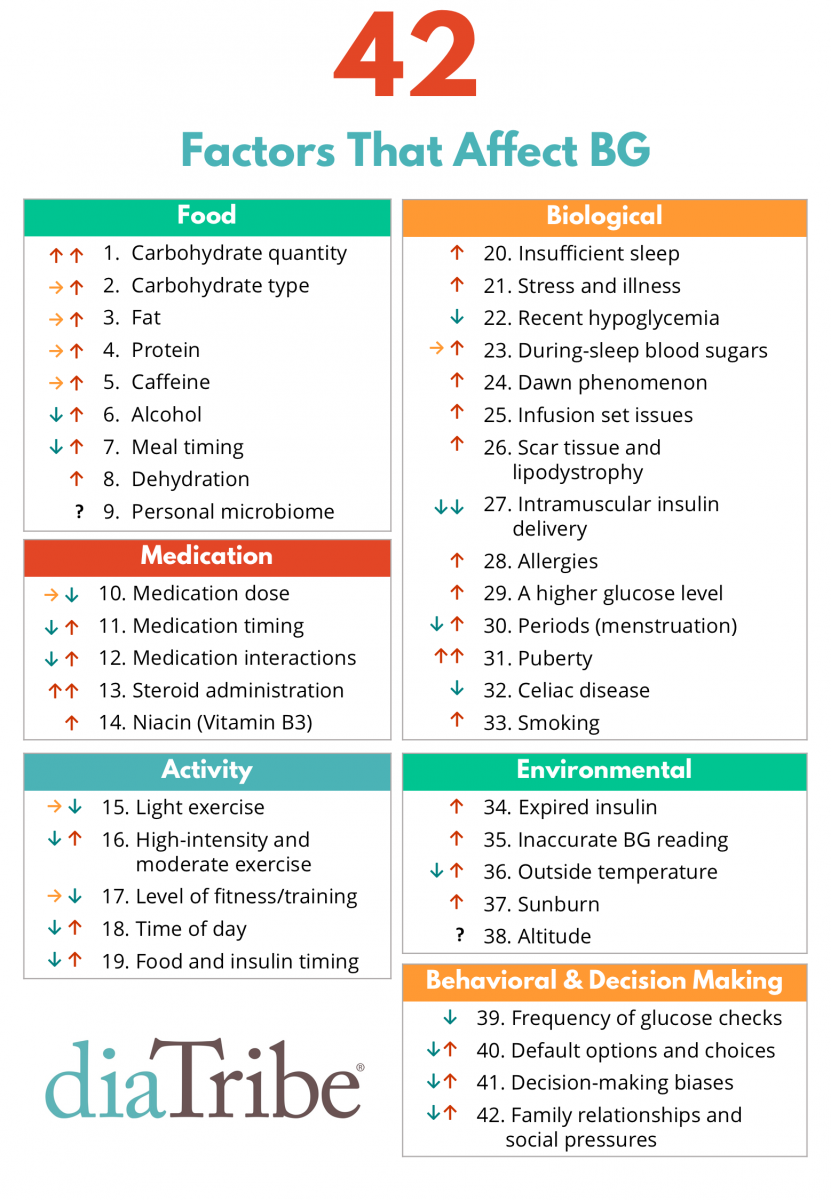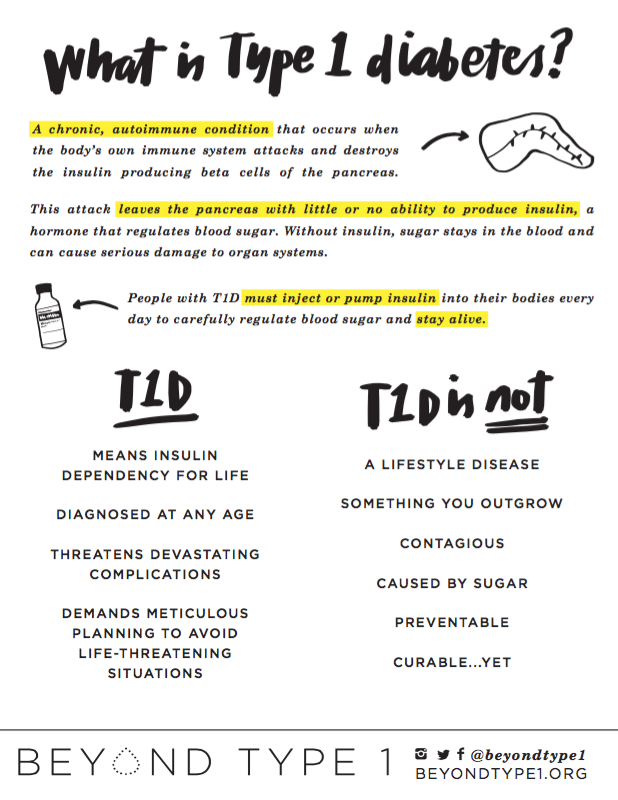“Living with Type 1 Diabetes is a constant balancing act of medication and life. T1D not only impacts people physically, but mentally as well."
--Ashley Gallagher
November is diabetes awareness month. Type one diabetes impacts millions of people all over the world, and 1.25 million people in the US alone.
Living with diabetes is 24/7. You lose hours and hours of sleep adjusting your blood sugar levels. You stop being afraid of needles and blood because you see them everyday. You deal with ignorance from people who are uneducated about T1D and about the differences between type one and type two diabetes. When you see food, you see carbohydrates, not actual food. You blame yourself for your diagnosis, and often your parents do as well. There are medical bills on top of medical bills. You never know if you’ll make it through the night. You have to keep going while your blood sugar rises and falls all day long.
Type one diabetes (T1D), or juvenile diabetes, is a chronic illness where a person's immune system begins attacking the insulin producing cells in the pancreas. It is neither curable nor preventable. Not only that, but it is an invisible illness. It’s not always clear that type one diabetics (T1D’s) have a disability.
T1D is usually diagnosed in children but occasionally is diagnosed in adults. The first peak in diagnosis happens between the ages of 4 and 7, and the second peak happens between the ages of 10 and 14.
Type one diabetics are insulin dependent. To manage their illness, they must visit their endocrinologist every one to three months. Because their pancreases do not produce insulin, they must take insulin via an insulin pump or injection. They also must count carbohydrates and monitor their blood sugar.
While it is ideal for a type one diabetic to keep their blood sugar between 80 and 130 mg/dL, this is not nearly as easy as it sounds. Almost everything can and will affect blood sugar.
Living with diabetes is 24/7. You lose hours and hours of sleep adjusting your blood sugar levels. You stop being afraid of needles and blood because you see them everyday. You deal with ignorance from people who are uneducated about T1D and about the differences between type one and type two diabetes. When you see food, you see carbohydrates, not actual food. You blame yourself for your diagnosis, and often your parents do as well. There are medical bills on top of medical bills. You never know if you’ll make it through the night. You have to keep going while your blood sugar rises and falls all day long.
Type one diabetes (T1D), or juvenile diabetes, is a chronic illness where a person's immune system begins attacking the insulin producing cells in the pancreas. It is neither curable nor preventable. Not only that, but it is an invisible illness. It’s not always clear that type one diabetics (T1D’s) have a disability.
T1D is usually diagnosed in children but occasionally is diagnosed in adults. The first peak in diagnosis happens between the ages of 4 and 7, and the second peak happens between the ages of 10 and 14.
Type one diabetics are insulin dependent. To manage their illness, they must visit their endocrinologist every one to three months. Because their pancreases do not produce insulin, they must take insulin via an insulin pump or injection. They also must count carbohydrates and monitor their blood sugar.
While it is ideal for a type one diabetic to keep their blood sugar between 80 and 130 mg/dL, this is not nearly as easy as it sounds. Almost everything can and will affect blood sugar.
Living with T1D is a constant balancing act of medication and life. T1D not only impacts people physically, but mentally as well.
The physical complications include heart, kidney, eye, nerve, and blood vessel damage, and complications with skin, mouth, and pregnancy. This illness takes an immense impact on emotional and psychological health. It isn’t just about checking blood sugar, giving insulin, and counting carbohydrates.
It is a self-managed illness which often means making life or death decisions. This plus the fact the management of type one diabetes is constant can make it very overwhelming.
Eating disorders are very common in people with T1D. One eating disorder that is especially common with type one diabetics is diabulimia. Diabulimia is characterized by purposefully withholding insulin to lose weight. 35% of young adult women with T1D have some symptoms of an eating disorder, and 11% of them meet full criteria for eating disorders. 16% of males with type one suffer from disordered eating.
Not doing everything that they are “supposed” to be doing often causes feelings of hopelessness, guilt, and anxiety. Having T1D more than doubles the risk of developing depression. Teens with type one diabetes are far more likely to develop depression, anxiety, and eating disorders than teens without.
There are two complications that occur nearly every day, multiple times per day, for a person living with T1D, that aren’t fatal if treated quickly and efficiently. These are hypoglycemia and hyperglycemia. Both of these complications can often take hours to resolve forcing someone to put their life on pause. This could be in the middle of their work day, school day, or in the middle of the night. Left untreated both of these complications can lead to more serious issues such as loss of consciousness, diabetic ketoacidosis, seizures, coma, or even death. This responsibility is often forced on kids as young as 5 to 7 years old.
Before type one diabetes is diagnosed, people often develop DKA, or diabetic ketoacidosis. It can also develop after diagnosis if a diabetic's blood sugar remains too high for a prolonged period of time.
DKA occurs when your body begins to break down fat and muscle in an attempt to get the body the energy it needs. This is because without insulin, your body cannot turn food into energy. DKA causes extremely frequent urination, extreme thirst, sweet smelling breath, and fatigue.
If left untreated, DKA will likely result in loss of consciousness, paralysis, or even death. This is one of the many reasons that it’s important for people to be aware of the symptoms of type one diabetes. If caught early enough, the chances are decreased of developing serious complications such as the ones listed above.
Symptoms of type one:
Misconceptions are far too common in regards to type one diabetes. One misconception about type one diabetes is mixing it up with type two diabetes. Type two diabetes is insulin resistance: insulin is still produced but it’s not being used as well as it should be. Type two diabetics are often the ones shown in media. This is where the stereotype that diabetics are fat and unhealthy comes from.
In mixing up these two types of diabetes, people often also assume that type one diabetics must have had too much sugar. People often pry for details about a diabetics health, and ask uncomfortable questions about what they can and cannot eat. However, in reality, type one diabetes is a genetic condition and has nothing to do with weight or diet.
Another misconception is that diabetes is contagious because it is an illness. Some people assume that you can “figure out” diabetes, when in reality, it is a complex disease and there's no way to figure it out or control it completely. These are just a few of the misconceptions that type one diabetics have to deal with very often.
This continuous stream of questions and comments about your chronic illness, what you can and can’t eat, what you can and can’t do, how you developed your illness, your diet, and more can make anyone feel overwhelmed, let alone someone dealing with an illness that requires 24/7 attention.
People also often make the mistake of assuming that type one diabetes is not a disability. Even if it is well managed and the person is healthy, it is still a disability. This can lead to rude questions from people who are unaware that there is such a thing as an invisible illness or disability.
Not only is it important that people be educated about diabetes so they can catch it early, but also so that they can know what to say and what not to say to someone with type one diabetes.
It's not just not making jokes, for example, “I’m gonna get diabetes from eating this” or other diabetes jokes of that nature. Before prying for details about someone's health, ask yourself, “Do I need to know this information?” If the answer is no, don’t ask.
For now, type one diabetes is an incurable chronic illness. Many people are diagnosed with it before they turn 18 and live with it for their entire lives. However, with awareness and education, more people are becoming conscious of the struggles that type one diabetics face on the daily. More and more medical advancements are being made not only to improve the quality of care and life for type ones, but also to hopefully find a cure one day.
The physical complications include heart, kidney, eye, nerve, and blood vessel damage, and complications with skin, mouth, and pregnancy. This illness takes an immense impact on emotional and psychological health. It isn’t just about checking blood sugar, giving insulin, and counting carbohydrates.
It is a self-managed illness which often means making life or death decisions. This plus the fact the management of type one diabetes is constant can make it very overwhelming.
Eating disorders are very common in people with T1D. One eating disorder that is especially common with type one diabetics is diabulimia. Diabulimia is characterized by purposefully withholding insulin to lose weight. 35% of young adult women with T1D have some symptoms of an eating disorder, and 11% of them meet full criteria for eating disorders. 16% of males with type one suffer from disordered eating.
Not doing everything that they are “supposed” to be doing often causes feelings of hopelessness, guilt, and anxiety. Having T1D more than doubles the risk of developing depression. Teens with type one diabetes are far more likely to develop depression, anxiety, and eating disorders than teens without.
There are two complications that occur nearly every day, multiple times per day, for a person living with T1D, that aren’t fatal if treated quickly and efficiently. These are hypoglycemia and hyperglycemia. Both of these complications can often take hours to resolve forcing someone to put their life on pause. This could be in the middle of their work day, school day, or in the middle of the night. Left untreated both of these complications can lead to more serious issues such as loss of consciousness, diabetic ketoacidosis, seizures, coma, or even death. This responsibility is often forced on kids as young as 5 to 7 years old.
Before type one diabetes is diagnosed, people often develop DKA, or diabetic ketoacidosis. It can also develop after diagnosis if a diabetic's blood sugar remains too high for a prolonged period of time.
DKA occurs when your body begins to break down fat and muscle in an attempt to get the body the energy it needs. This is because without insulin, your body cannot turn food into energy. DKA causes extremely frequent urination, extreme thirst, sweet smelling breath, and fatigue.
If left untreated, DKA will likely result in loss of consciousness, paralysis, or even death. This is one of the many reasons that it’s important for people to be aware of the symptoms of type one diabetes. If caught early enough, the chances are decreased of developing serious complications such as the ones listed above.
Symptoms of type one:
- Extreme thirst and hunger
- Fatigue
- Blurry vision
- Deep, rapid breathing
- Rapid loss of weight
- Increased urination
- Sweet or fruity breath odor
- Nausea and/or vomiting
- Headache
- Mood problems
- Shaking
- Sweating
- Weakness
Misconceptions are far too common in regards to type one diabetes. One misconception about type one diabetes is mixing it up with type two diabetes. Type two diabetes is insulin resistance: insulin is still produced but it’s not being used as well as it should be. Type two diabetics are often the ones shown in media. This is where the stereotype that diabetics are fat and unhealthy comes from.
In mixing up these two types of diabetes, people often also assume that type one diabetics must have had too much sugar. People often pry for details about a diabetics health, and ask uncomfortable questions about what they can and cannot eat. However, in reality, type one diabetes is a genetic condition and has nothing to do with weight or diet.
Another misconception is that diabetes is contagious because it is an illness. Some people assume that you can “figure out” diabetes, when in reality, it is a complex disease and there's no way to figure it out or control it completely. These are just a few of the misconceptions that type one diabetics have to deal with very often.
This continuous stream of questions and comments about your chronic illness, what you can and can’t eat, what you can and can’t do, how you developed your illness, your diet, and more can make anyone feel overwhelmed, let alone someone dealing with an illness that requires 24/7 attention.
People also often make the mistake of assuming that type one diabetes is not a disability. Even if it is well managed and the person is healthy, it is still a disability. This can lead to rude questions from people who are unaware that there is such a thing as an invisible illness or disability.
Not only is it important that people be educated about diabetes so they can catch it early, but also so that they can know what to say and what not to say to someone with type one diabetes.
It's not just not making jokes, for example, “I’m gonna get diabetes from eating this” or other diabetes jokes of that nature. Before prying for details about someone's health, ask yourself, “Do I need to know this information?” If the answer is no, don’t ask.
For now, type one diabetes is an incurable chronic illness. Many people are diagnosed with it before they turn 18 and live with it for their entire lives. However, with awareness and education, more people are becoming conscious of the struggles that type one diabetics face on the daily. More and more medical advancements are being made not only to improve the quality of care and life for type ones, but also to hopefully find a cure one day.




